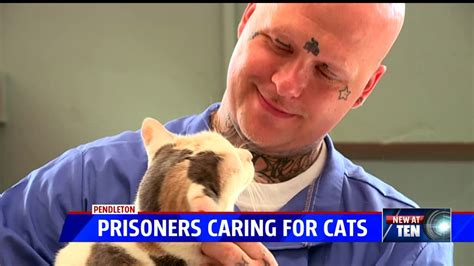Introduction
Cat rescue and rehabilitation has become a thriving movement worldwide. Driven by compassion and a deep understanding of the plight of abandoned and injured felines, countless organizations and individuals dedicate their efforts to providing care and support to these vulnerable animals. This article delves into the key aspects of cat rescue and rehabilitation, exploring the benefits, ongoing challenges, and future prospects of this growing initiative.

Importance of Cat Rescue and Rehabilitation
1. Providing a lifeline for abandoned cats: Every year, millions of cats are abandoned, left to fend for themselves on the streets or in shelters. Cat rescue organizations provide a lifeline to these abandoned animals, offering them a safe haven, food, and medical care.
2. Rescuing injured and sick cats: Accidents, abuse, and neglect can lead to serious injuries and illnesses in cats. Cat rescue and rehabilitation services provide critical care to these cats, often rescuing them from life-threatening situations and giving them a second chance at life.
3. Promoting animal welfare: Cat rescue and rehabilitation organizations advocate for the well-being of all cats. They educate the public about responsible pet ownership, spaying and neutering, and the importance of providing cats with a safe and healthy environment.
Challenges in Cat Rescue and Rehabilitation
1. Overpopulation: The overpopulation of cats is a major challenge facing rescue organizations. With millions of cats being abandoned each year, shelters and foster homes are often overwhelmed, leading to overcrowding and limited resources.
2. Lack of funding: Cat rescue and rehabilitation organizations rely heavily on donations and grants to fund their operations. However, funding is often limited, making it difficult to provide adequate care for all the cats in need.
3. Medical emergencies: Injured and sick cats often require expensive medical treatments, which can strain the resources of rescue organizations. Access to affordable veterinary care is crucial for ensuring the well-being of rescued cats.
Solutions to the Challenges
1. Spaying and neutering: Spaying and neutering cats is the most effective way to reduce overpopulation. By preventing unwanted litters, rescue organizations can reduce the number of cats in need and free up resources for other cats.
2. Foster care: Foster care plays a vital role in cat rescue. Foster homes provide temporary shelter and care for rescued cats, allowing them to recover from injuries or illnesses before being adopted.
3. Fundraising and community support: Rescue organizations rely on the support of the community to fund their operations. Fundraising events, community outreach programs, and online donations are essential for ensuring the continued care of rescued cats.
Benefits of Cat Rescue and Rehabilitation
1. Reduced euthanasia rates: Rescue organizations work tirelessly to reduce the number of cats euthanized in shelters. By providing adoption services, they give cats a second chance at life and prevent unnecessary suffering.
2. Improved cat health and well-being: Rescue organizations provide medical care, vaccinations, and spaying and neutering services to rescued cats. These interventions improve the health and well-being of these animals, giving them a better chance at a long and happy life.
3. Community engagement: Cat rescue and rehabilitation organizations connect people with the plight of abandoned and injured cats. By volunteering, donating, or adopting a rescued cat, people can make a real difference in the lives of these animals and promote animal welfare in their communities.
Future Directions and Innovations
The movement of cat rescue and rehabilitation is expected to continue growing in the coming years, with new and innovative approaches being developed to address the challenges facing these organizations.
1. Telemedicine: Telemedicine is becoming increasingly used in veterinary care, allowing rescue organizations to provide remote medical consultations and support to rescued cats. This can reduce the cost and time associated with veterinary visits and improve access to care for cats in remote areas.
2. AI-powered rescue: Artificial intelligence (AI) is being explored for use in cat rescue and rehabilitation, with applications such as automated pet detection and behavior analysis. These technologies can help organizations identify and rescue cats in need more efficiently and provide personalized care plans for rescued animals.
Case Study: Success Story
One of the leading cat rescue and rehabilitation organizations in the world is the Humane Society of the United States (HSUS). In 2021, HSUS rescued over 100,000 cats from shelters and the streets. Through their foster care program, they provided temporary shelter to over 50,000 cats, allowing them to recover from injuries or illnesses before being adopted.
Conclusion
Cat rescue and rehabilitation is a critical movement that provides a lifeline to abandoned and injured felines. By providing shelter, medical care, and adoption services, these organizations play a vital role in improving the lives of cats and promoting animal welfare in communities around the world. As the movement grows, new and innovative approaches will continue to be developed to meet the challenges facing rescued cats and ensure their health, well-being, and happiness.





















